Matcha Latte is one among other popular drinks, and you may find it on the menu of every tea room, coffee shop, restaurant, and even donut store.
The popularity of Matcha Latte is not just because of its tastefulness, but because of its great deal of health benefits at the same time.
Drinking Matcha Latte is like you are consuming the whole tea leaves deliciously with the full nutritional benefits since matcha is made by grinding the young tea leaves into bright green powder. And naturally, the entire tea leaf contains antioxidants, amino acids, vitamins, minerals, and fiber.

Otherwise, since most matcha latte drinkers said that drinking it also can help them awake at the office, is this because the matcha contains caffeine too? Let’s go figuring it out together.
Contents
Matcha Latte Contain Caffeine
Most of you may know that Matcha is made with young tea leaves, but not many know that those young tea leaves are the Camellia Sinensis tea plant.
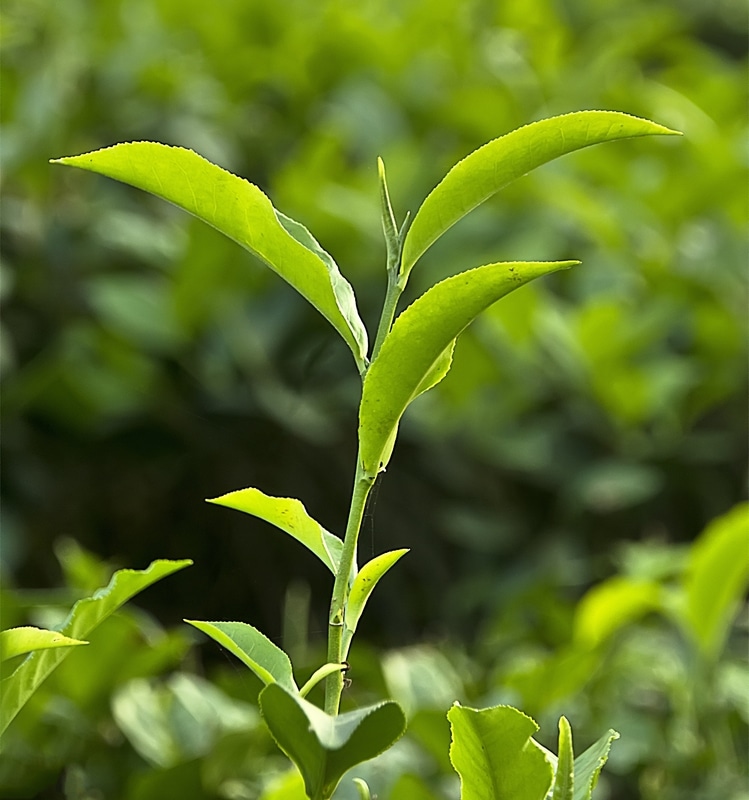
The method they grow tea plants to get bright green color is that they plant them in the shade to increase the chlorophyll within the plants. Only young leaves are picked to grind into powder.
Typically, tea leaves already contain the caffeine substance, according to ConsumerLab.com, but just in different quantities by different kinds of tea leaves and the method they make it into other forms.
A cup of Matcha Latte which is made with matcha powder even possibly has higher caffeine than a cup of tea. Because the hot water can extract only some of the caffeine that is contained in tea leaves, whereas matcha green tea which is ground with whole tea leaves make matcha tea drinkers receive all caffeine substances in it.
But How Much Caffeine is in Matcha Latte?
When you drink a cup of matcha latte, it means that you consume all of the caffeine in it. But the amount of the caffeine, we cannot measure by the cup size and not the latte that contains within the cup either. It depends on how much powder you use to mix in the drink.
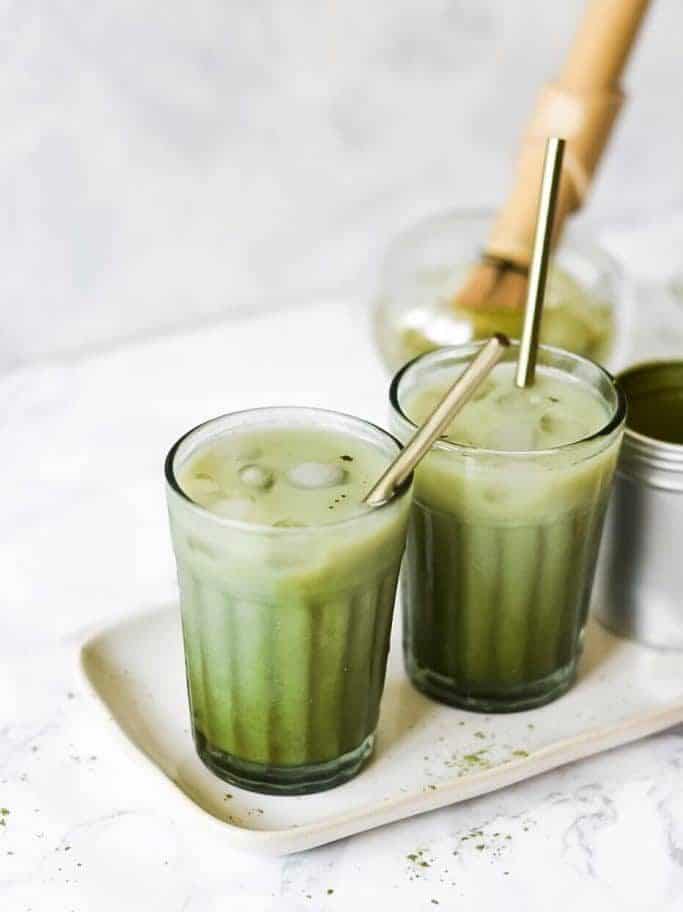
Normally, an eight-ounce cup of matcha latte uses only one teaspoon of matcha powder—so the caffeine content of a cup of matcha latte is 70 milligrams.
Though in Japan, in the traditional way of making a cup of matcha latte, they use one to two teaspoons to mix in the drink, so that the drink contains caffeine 70-140 milligrams. The taste also can be a bit bitter, but still great for most individuals who are into green tea.
Is Caffeine Content in Matcha Latte Bad for Your Health?
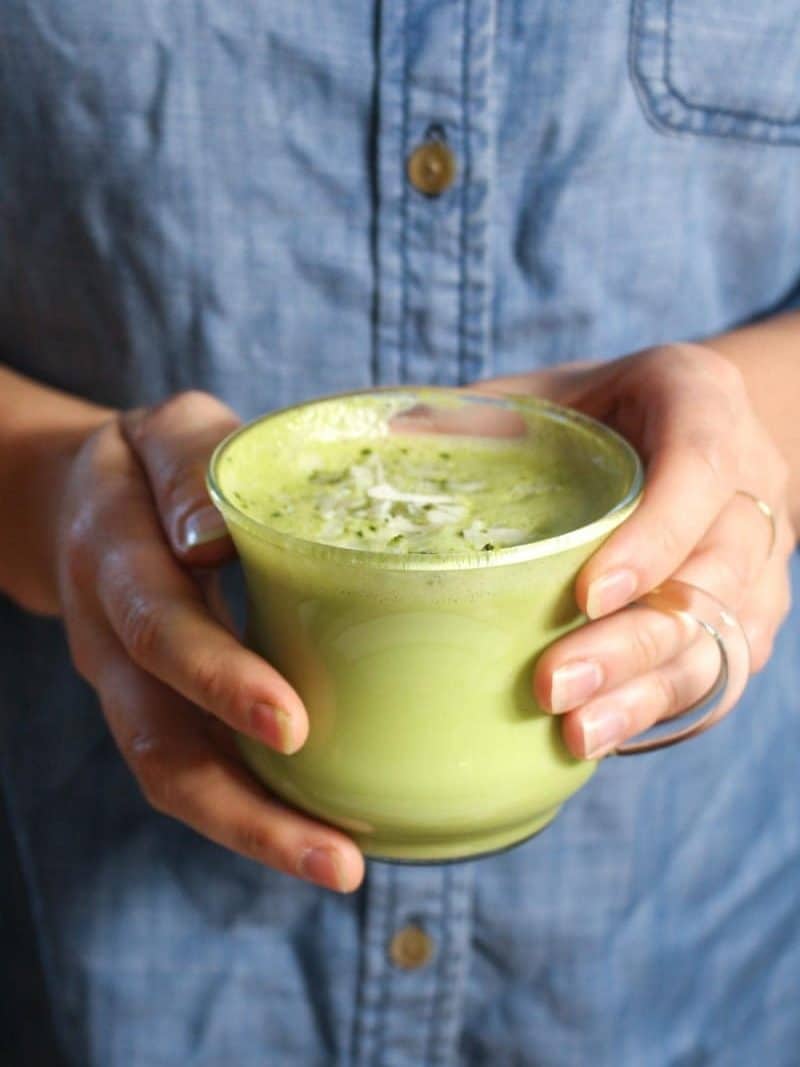
Up to 400 milligrams of caffeine per day causes you trouble. So, the answer of “Is caffeine content in Matcha Latte bad for your health?” is not bad at all, but, instead of providing you plenty of health benefits.
As per serving, they use only one to two teaspoons of matcha powder which is equal to 70-140 milligrams. If you compare matcha and coffee, it is sure that coffee has higher caffeine.
Typically, an eight-ounce cup of coffee contains from 95 to 200 milligrams of caffeine (depending on how strong your brewing is), according to the U.S. National Library of Medition.
Likewise, you can keep in mind that drinking matcha lattes daily is counted as a healthy lifestyle. You can drink it in the morning to keep you more productive at work or before a workout, it can help you continue your performance longer than without drinking it.
Additionally, good news for the newbies in matcha drink, the moderate amount of caffeine in matcha lattes can help speed up your metabolism and burn fat faster. If you are not into coffee, you can choose to drink matcha instead.
Which One is Best Between Matcha and Coffee?
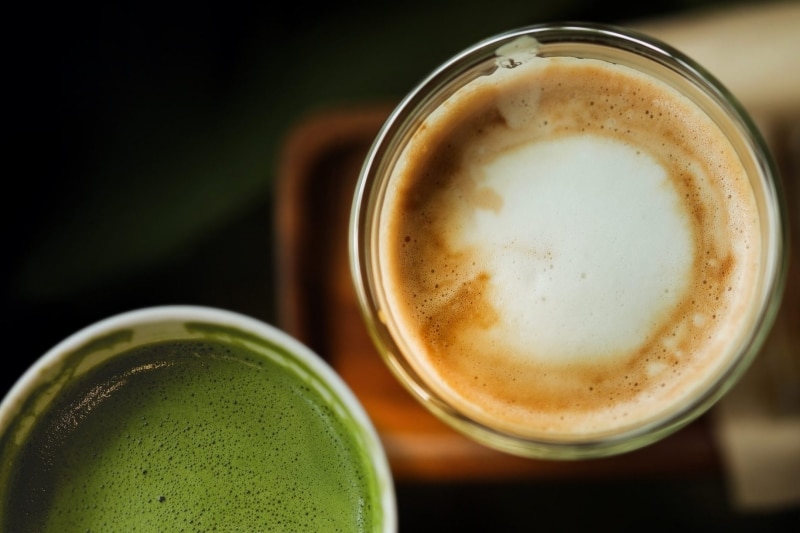
Naturally, matcha green tea and coffee provide similar health benefits, the most important thing is based on your own preference.
These two, matcha and coffee have minimal calories and a bitter taste that you could enjoy sipping.
Coffee is known as an energy drink with higher caffeine content. Some individuals may receive negative side effects from drinking it such as getting anxiety, poor sleep at night, headache, stomach upset, and others. This happened due to genetics and liver lack of the ability to metabolize high caffeine amounts. Accordingly, matcha is the best for those who are sensitive to high caffeine.
Reasons Why We Should Drink Matcha Latte Every Day
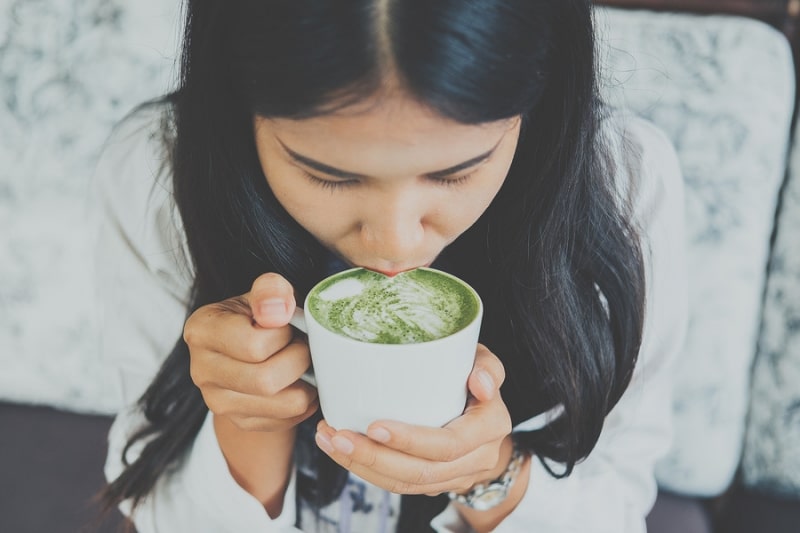
As we know that matcha tea is rich in antioxidants and one of those is a special kind of antioxidant called catechin which can offer anti-cancer outcomes, heart disease, type 2 diabetes defense, and also high blood pressure prevention.
Moreover, matcha’s caffeine level is controlled by amino acids and the antioxidant L-theanine.
The L-theanine has calming properties that can enhance the feeling of relaxation, and concentration. It also helps you to reduce insomnia and weight gain. Consuming one cup while at work or before a workout is the best. Otherwise, even on the weekend, you also can enjoy it if you wish. Once for all, drinking this beverage is called a healthy lifestyle habit.
How to Make a Great Matcha Green Tea Latte at Home
Waiting in line at the shop to wait for a cup of matcha drink is kind of boring these days and even not safe in this Covid-19 outbreak period. So, it’s so good to learn how to make it at home.

By all means, making a matcha green tea latte is kind of fun and exciting; it is even good since you can get the blend as you prefer. Otherwise, it helps you save more.
There is no big difference between making coffee latte and matcha green latte, they are made in the form, just instead of espresso to matcha.
One more thing, you will not need any expensive machine as well—you will just need one whisk to blend matcha powder with hot water.
The Ingredients
- ½-1 teaspoon matcha powder
- ¼ cup of boiling water
- ¼ cup of coconut milk (full-fat or light milk is optional)
- Maple syrup, honey, or sweetener (optional)
Instructions
- First, sift the matcha into lump-free and spoon ½-1 teaspoon of matcha into your mug. Then, pour ¼ cup of boiling water and whisk briskly (whisk up and down) until matcha becomes frothy.
- After that, add ¼ cup of coconut milk and keep whisking until it is well blended. In the end, you can taste it and add more water and coconut milk in the amount you prefer. And if you want your matcha latte flavor a little bit sweeter, you can add a tiny amount of sugar into it, it’s all fine.
- Within only 5 minutes or less, your delicious matcha green tea is served. Just as simple as that. Otherwise, if in the summertime, your preference must be something cold, so that you can add some ice into it.
Choosing Quality Matcha Teas
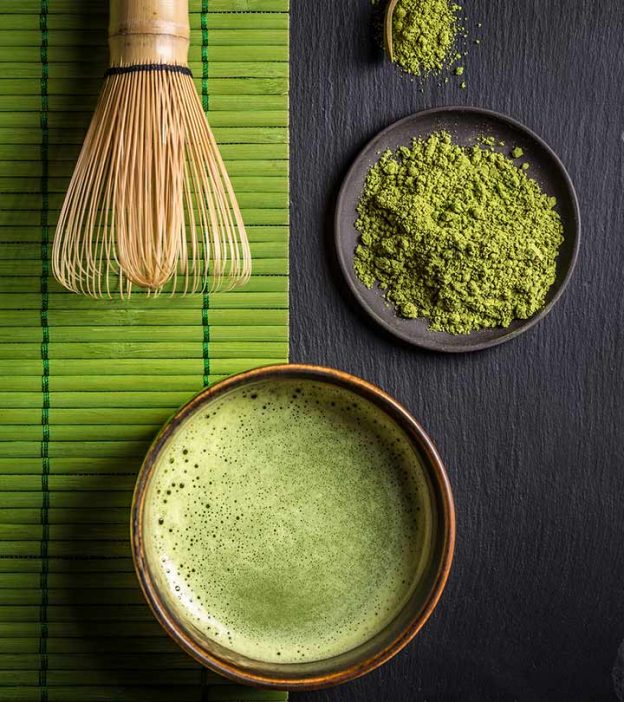
If you are into matcha green tea and have already decided to add it into your daily activities—now let’s figure out tips in choosing the best quality matcha at the supermarket or mart near your house.
Of course, there are plenty of health benefits that you could get from consuming matcha drinks, but as long as you have chosen a good quality one. It requires you to be careful.
Below are tips to help you choose good quality matcha green tea:
Origin: Mostly, for natural products, knowing the country’s origin is pretty important. For Japanese green tea is grown under special conditions—and Japan is known as a country that discovered and developed matcha into the best.
Likewise, as we know that this country has strict farming standards and regulations to maintain its reputation of “Best and Safe Matcha is from Japan”. Almost always, most matcha tea leaves are grown in Uji (on the southern side of Kyoto city). And other regions such as Saitama, Nishio, Mie, Kagoshima, Nara, and Shizuoka. Consequently, you can check the origin country of the product before you decide to purchase it.
Purity: The organic matcha contains amino acids, vitamins, and minerals that provide plenty of health benefits. But, tea plants which are grown by using chemical fertilizers are harmful to consumers. Moreover, some matcha brands add addictive substances or sweeteners to enhance the flavor. Thus, you need to check carefully the information of each brand before you purchase it.
Texture: At this point, you may be easy to recognize. You can see it clearly when whisking the powder with hot water. Check if it melted well or not. Low-quality matcha, no matter how much you whisk, you will still feel coarse and gritty when you drink it.
Color: You can know through the color of matcha. If its color is bright green, it means that the matcha has been stored properly. But, if its color becomes dull, it means that the matcha was not produced and packed under the standard. The other things are because of the expiration and improper storage.
Packaging: The packaging that can protect the quality of matcha is kind of waterproof and also can prevent exposure to air, light, and extreme temperatures. Also, if you find the resealable packs or tins are best since it can help keep the matcha fresh longer.
The Bottom Line
Matcha Latte is a popular beverage all over the place which is easy to find. It is considered a healthy beverage as well since it is rich in antioxidants and other good substances that help a lot with consumer’s health. Also, matcha contains caffeine. Commonly, an eight-ounce cup of matcha latte contains 70-140 milligrams of caffeine.
Typically, drink matcha latte in a moderate amount, it can provide you with decent health benefits. If you are not into coffee, matcha latte is the perfect choice for you.
Reference
- Does Matcha Have As Much Caffeine As Coffee? Here’s What To Know| Women’s Health| KORIN MILLER
- Does Matcha Have Caffeine? What to Know about the Energy-Boosting Effects of Green Tea Powder| PIQUE| Katie Dwyer
- Does L-theanine have health benefits?|Medical News Today|Claire Sissons
- Your Guide to Finding the Best Matcha Tea| Sencha|
- MATCHA AND CAFFEINE|GOT MATCHA|
Matcha 101 + How To Make a Matcha Latte By Clean & Delicious
